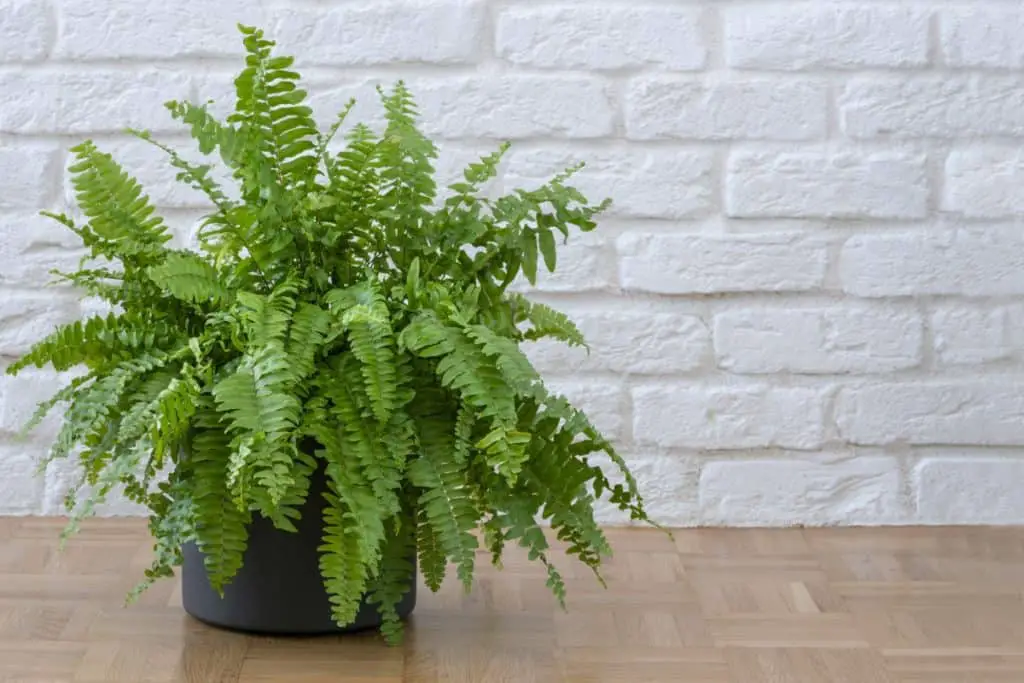Ferns sometimes get tired and old. Occasionally the foliage becomes discolored in a particular region of the plant, or the older fronds look tatty and brown. Understandably, the impulse is to prune them and tidy up the mess, but it isn’t always obvious whether the fern will grow back healthily after cutting them back. So, how and when should you prune ferns to get the best recovery?
Ferns do grow back after cutting, but the new growth will emerge from the rhizome below the soil. This means you should cut any damaged or discolored foliage down to the crown at the base of the plant to stimulate new growth. Trimming the tips of fronds will lead to more die back from the cut site, and risks infection or disease.
Although most ferns will bounce back well after pruning – and many plants will respond to even severe cutting with robust new growth – it is important to prune at the right time and place to get the best results.
What will happen to cut fronds?
It may be tempting to simply trim away just those parts of the frond that are looking unsightly, in the hope that you can retain the good green growth beneath (and continue to provide useful energy for the fern). This is rarely a successful strategy, as the frond is more likely to just wither and die from the cut tip.
Ferns cannot regrow from the existing fronds. However, cutting the tips will introduce a new site of damage that can lead to the plant becoming compromised – it is a potential route for new fungal, bacterial disease to enter the plant and get established.
If your fern has fronds that turn brown only at the tips or edges, it is likely a sign of low humidity, or a problem with water or nutrient balance. It is important to try and find out why this is happening. Unless you resolve the cause of the deterioration, it is likely to recur.
How should you prune ferns?
Dead or damaged fronds should be cut back as close to the base as possible, at the point where the stipe (stalk) of the frond emerges from the crown. Take care to not damage the crown itself, as this is where the new growth will emerge as “fiddleheads”.
It is best to use a pair of sharp scissors or shears, and to clean them before pruning to prevent introducing an infection at the cut site.
Avoid pulling or twisting the fronds, as this is likely to tear the caudex (the thicket of woody, tough material that protects the rhizomes and roots below) and risk damaging the growth zone below. It also allows bacteria or fungi to get access to the most vulnerable part of the plant.

Where will cut ferns regrow?
New fronds emerge from the rhizome of the fern, which is similar to the stem of flowering plants, but lies below the soil (except in tree ferns).
The precise pattern of regrowth depends on the growth habit of the fern species – some have tightly limited crowns, but others have creeping rhizomes that can spread through the soil (leading to new growth at a distance from the parent plant).
It is also possible to split ferns by taking cuttings from the rhizome. This will lead to daughter plants that are stimulated to grow more vigorously than ever, and can be especially effective if an indoor fern has become pot bound and exhausted.
During the growing season, fronds will emerge as fiddleheads that then unfurl over the course of a few weeks.
Is pruning ferns necessary?
No harm will come from leaving old fronds in place, as long as the fern is healthy.
For outdoor ferns, the fronds will eventually die back and provide natural mulch and protection of the crown. For indoor ferns, the old foliage will be overgrown by new fronds, leaving a tatty collar around the edge of the crown (and pot).
The main reason to cut away old fronds is therefore aesthetic. The dead material can be unsightly, and removing it helps to showcase the healthy new growth. It’s a personal choice, but most people do prefer their plants to look elegant and tidy.

When should ferns be pruned?
Brown or damaged fronds can be cut back safely at any time, for cosmetic improvement of the fern. However, new fiddleheads will not emerge outside of the growing season (typically spring till late summer, depending on the species), so it is best to wait until then if you want to use the pruning to stimulate new bushy growth.
For deciduous species of ferns, fronds will turn brown and die back in fall. It is best to let this natural process proceed without interference, as the dead fronds can provide some protection against cold and wet over winter.
Once the worst of winter has passed, in early spring, it is worth clearing all this dead material away. Even evergreen ferns can be thoroughly cut back at this time, clearing the crown of all old fronds. This promotes healthy and vigorous new growth, and keeps the plant looking bushy and vibrant each year.
It is amazing how well ferns respond to a severe haircut like this, but one note of caution is to be sure that the fern is well established in its pot or in the ground before trying out this method. It’s best to allow the fern a full year for the root and rhizome system to build up reserves of energy before starting this maintenance routine.
Ferns will grow back robustly after cutting, and the emergence of new fronds will be most abundant in the growing season. It is important to remember that the new growth will not come from the cut site, and so the whole frond should be removed once you’ve decided to cut back.
With occasional cosmetic pruning, the beauty of the fern can be maintained. For older, more established plants, a good shearing in early spring can stimulate renewal – and spectacular, bushy growth every year.
